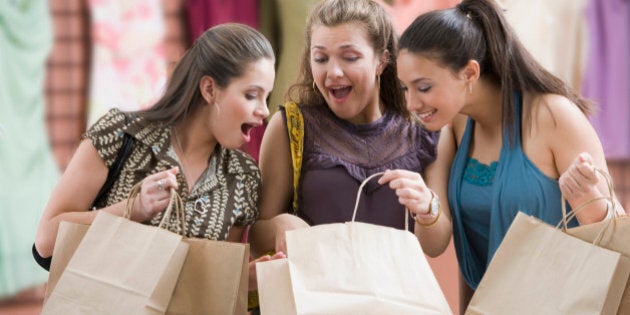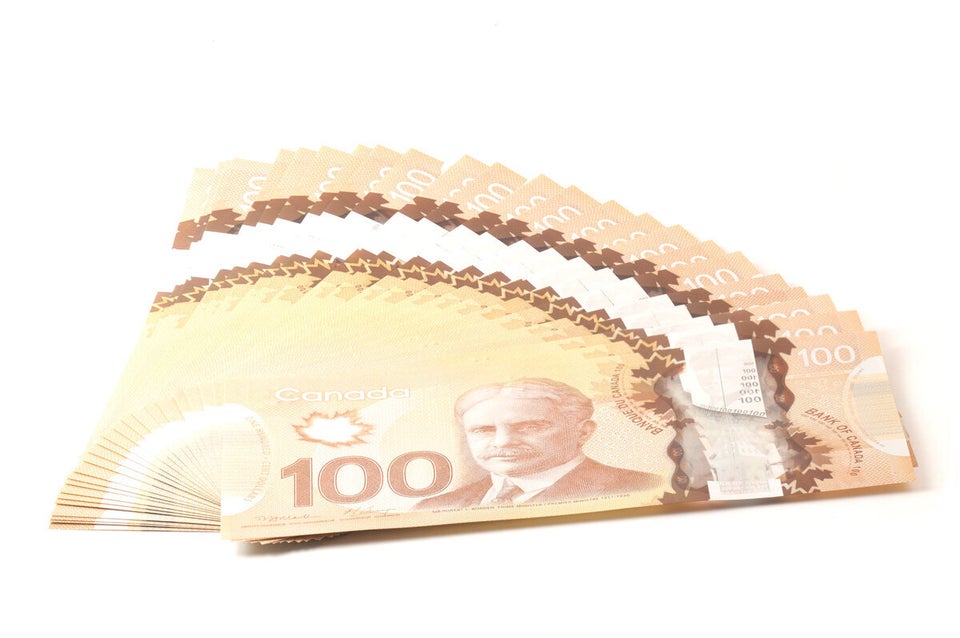
The grand total for a lifetime of shopping is $125,000, according to a recent survey of 1,000 British adults. That tally includes 271 pairs of shoes, 185 dresses and 145 bags.
Here in Canada, our impulse purchases alone add up to $3,720 annually, according to a Bank of Montreal report, which also found that men spend double that of women on things that they “want” rather than “need” ($414 per month versus $207 per month) — something to point out the next time your guy protests your “10th pair of identical black flats.” But research indicates that a closet full of clothing can reveal just as much about your state of mind as it does about your (dwindling) bank balance.
So just how do we decide what to spend our hard-earned money on? Researchers from MIT, Carnegie Mellon and Stanford got together to solve this question scientifically. Volunteers were placed in functional magnetic resonance imaging (fMRI) scanners, which measured the flow of blood and oxygen to their brains while they were shown a variety of products with different prices. Each participant was asked to select which items they would purchase.
The scientists found that the participants weighed the pleasure that would be derived from each object with the immediate pain of having to pay for it. So instead of comparing a purchase to other items they could buy with the same money — for example, deciding between sparkly Louboutins and two months of groceries — they thought about how attached they were to the $700 they would be parting with either way. Still, the factors that influence our purchasing decisions are not so clear-cut — our decision to fork over cash may even be affected by the mood we’re in. Here’s a look at six emotions and how each could affect our spending.
When you’re feeling powerful, you’re more likely to buy: An investment accessory
In their paper Generous Paupers and Stingy Princes, researchers from Northwestern University, in Illinois, reported that people who felt momentarily powerful spent more money on themselves than on others. The authors asked participants to recall events during which they felt powerful (nailing a pitch at work) or powerless (getting demoted) and then had them enter a bid at an auction. Those on a power high spent an average of $12.08 on an item for themselves and only $7.10 on a purchase to be given to someone else. The participants who recalled a moment when others had power over them spent an average of $6.49 on themselves and $10.81 on others.
When you’re excited, you’re more likely to buy: Something you didn’t know you wanted
A field study of Singaporean consumers in stores ranging from The Body Shop to IKEA suggests that overstimulation — like loud music, bright colours or ambient scents such as grapefruit — leads to increased unplanned spending because these types of stimulants make it more difficult to think over your decisions. The finding could extend to online shopping sites — Target, for example, recently revamped its website with an explosion of colours.
When you’re envious, you’re more likely to buy: A designer bag owned by Kim Kardashian — or your BFF
According to professors at Tilburg University, in the Netherlands, we will pay well above a reasonable price for goods when we are feeling “green.” However, where we spend this so-called “envy premium” depends on whether or not we feel that the person we’re jealous of is deserving of what she has. If we deem her worthy, we’ll splurge on the same items; if not, we’ll strive to one-up her by paying more for something she doesn’t have.
When you’re feeling flirty, you’re more likely to buy: Sexy lingerie
A study published in the Journal of Consumer Research found that a woman’s cycle affects what she picks off the racks. Women at the peak of fertility (day 14, for those of you not keeping close track) are more likely to choose sexier or revealing clothing than conservative options. The authors liken the role of clothing to that of a deer’s antlers (which are used to ward off romantic competition): Women dress to outdo other women, not to attract a man.
When exposed to attractive women before shopping, women who were ovulating bought 25 per cent more revealing clothing than their non-ovulating counterparts. When they were shown pictures of women outside of their dating pool (i.e., whom they didn’t view as competition), ovulation had no effect on purchases.
When you’re sad, you’re more likely to buy: Something luxe
A study by researchers from Harvard and other top universities concluded that “misery is not miserly.” The study recruited 33 participants who were randomly assigned to watch either a “neutral” video clip on the Great Barrier Reef or a sad clip from the 1979 weepie The Champ (of which one Rotten Tomatoes reviewer wrote “The tear-jerking is so determined and persistent that your ducts feel as if they’d been worked over with a catheter”). Participants were then shown a picture of an insulated water bottle and asked to decide whether or not to buy it at prices ranging from $0 to $10. Those who watched the sad clip bought the bottle at a price that was $1.55 higher, on average, than that of the neutral volunteers.
When you’re claustrophobic, you’re more likely to buy: A notice-me piece
Two studies found that the crowds and noise we encounter when shopping may lead to more than just a massive headache. In one study, Chinese researchers put university students in a crowded situation and asked them to imagine that they were making an online shopping purchase and could choose from four shirts that were identical, except one had a logo that was a vibrant orange instead of a shade of blue. Thirty-five per cent of the students who felt their personal space was being violated chose the orange shirt versus 8 per cent of those who did not feel encroached upon.
The authors attribute their finding to our need to express individuality when shopping with the masses. Another paper, co-authored by Dilip Soman, a University of Toronto marketing professor, found that crowded environments cause consumers to veer toward “safety-oriented options” — like choosing to buy a moisturizer with UV protection rather than one that has a special scent.
More on Elle Canada
Also on HuffPost
